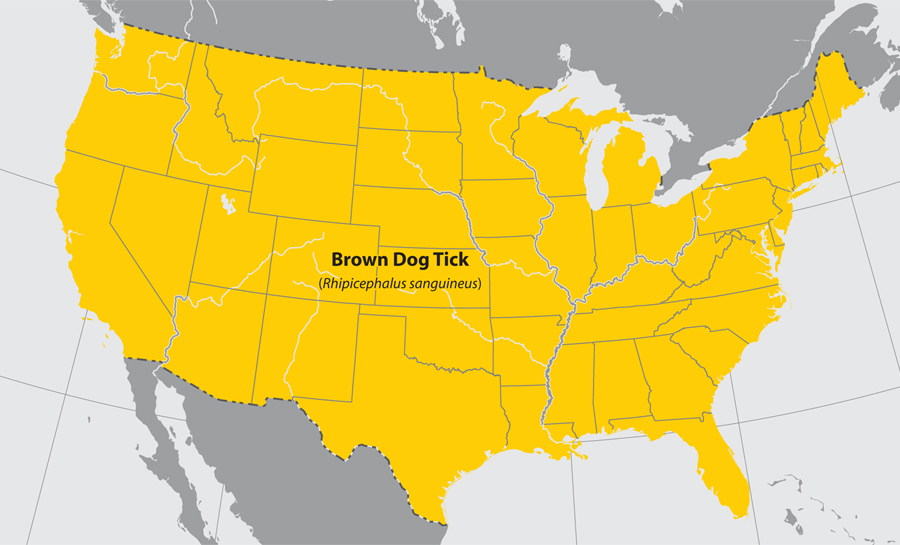HARD TICKS
IXODIDAE
The hard ticks (Ixodidae) identified below pose health risks for both humans and animals in the Pacific Southwest. Hard ticks are recognized by their mouth parts that project forward from the body and for having a hard outer shell, also known as scutum.
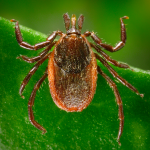
WESTERN BLACKLEGGED TICK
Ixodes pacificus
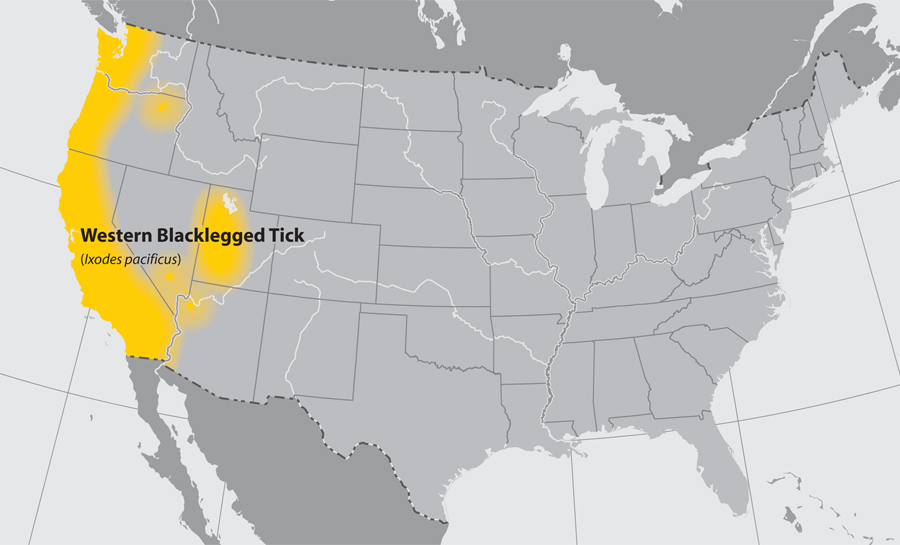
Western blacklegged ticks can be found in northern California, along the Pacific Coast of the US.
Visit the CDC website for more information.
Western blacklegged ticks can carry and spread pathogens that are responsible for diseases in both humans and animals.
- Anaplasma phagocytophilum (pathogen) – Anaplasmosis (disease)
- Borrelia burgdorferi (pathogen) – Lyme disease (disease)
- Borrelia miyamotoi (pathogen)
View CDPH Seasonal Risk of Exposure to Infected Western Blacklegged Ticks in California
 Photo: Bay Area Lyme Foundation
Photo: Bay Area Lyme Foundation
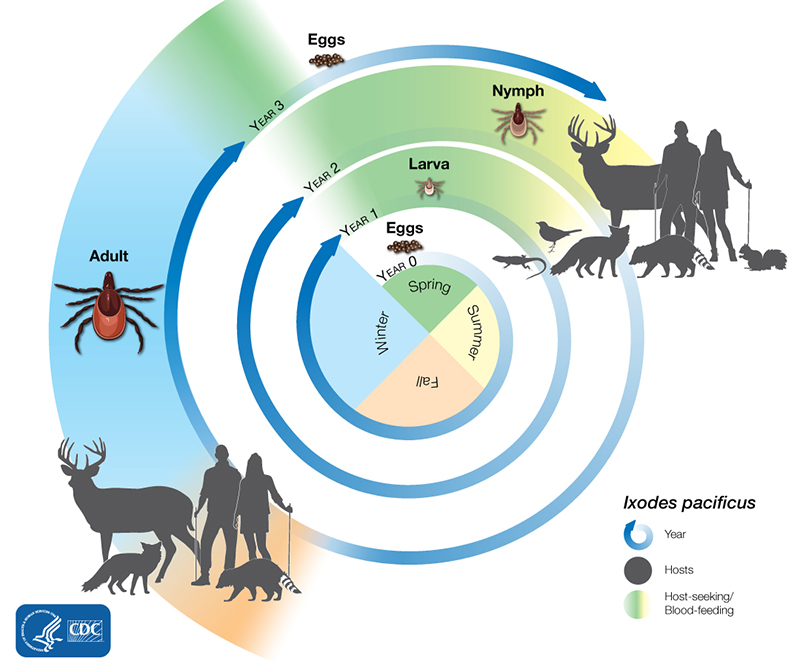
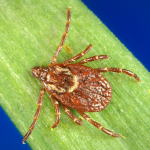
AMERICAN DOG TICK
Dermacentor variabilis
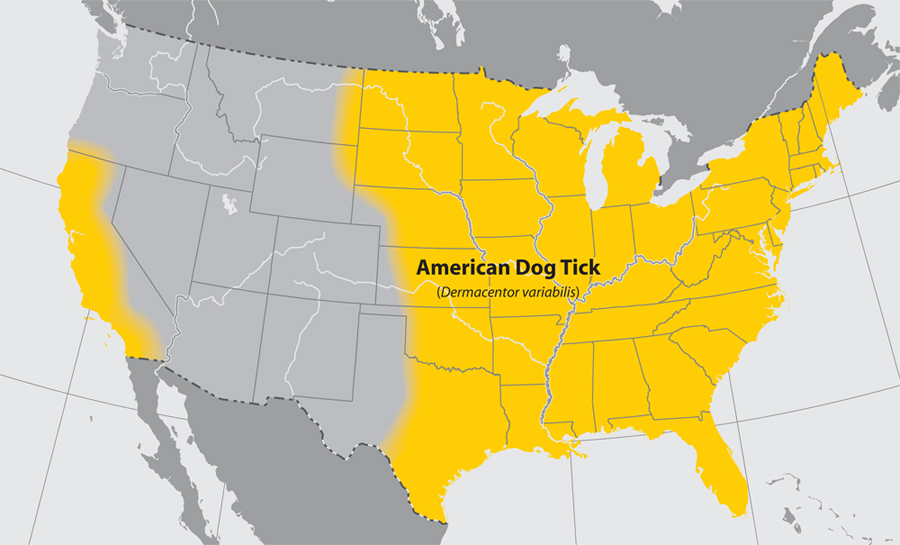 American dog ticks are widely distributed east of the Rocky Mountains. They can also be found in limited areas on the Pacific Coast.
American dog ticks are widely distributed east of the Rocky Mountains. They can also be found in limited areas on the Pacific Coast.
Visit the CDC website for more information.
American dog ticks can carry and spread pathogens that are responsible for diseases in both humans and animals.
- Francisella tularensis (pathogen) – Tularemia (disease)
- Rickettsia rickettsii (pathogen) – Rocky Mountain spotted fever (disease)
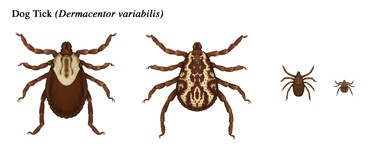 From left to right:
From left to right:
- Adult female
- Adult male
- Nymph
- Larva
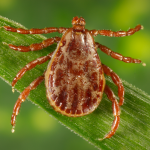
ROCKY MOUNTAIN
WOOD TICK
Dermacentor andersoni
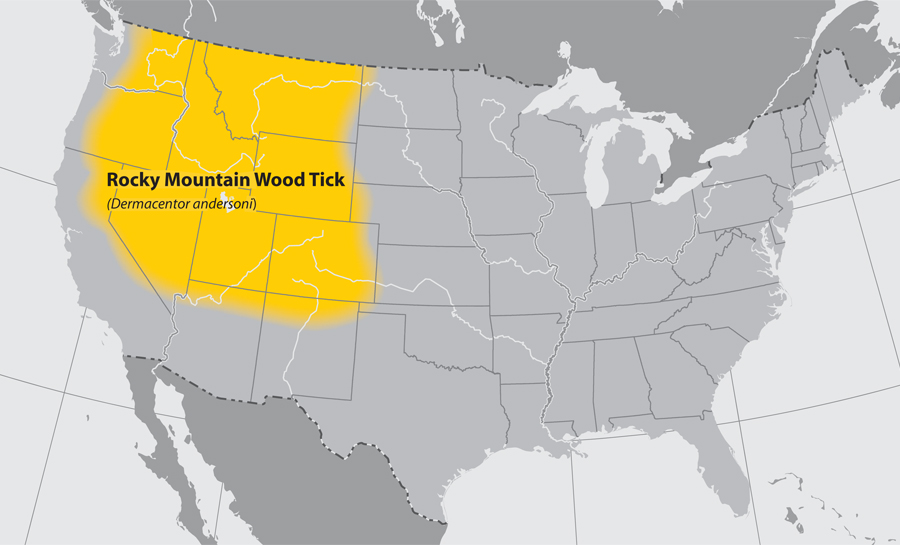
Rocky Mountain wood ticks can be found in Rocky Mountain states and southwestern Canada from elevations of 4,000 to 10,500 feet.
Visit the CDC website for more information.
Rocky Mountain wood ticks can carry and spread pathogens that are responsible for diseases in both humans and animals.
- Francisella tularensis (pathogen) – Tularemia (disease)
- Rickettsia rickettsii (pathogen) – Rocky Mountain spotted fever (disease)
- Colorado tick fever (CTF) virus – Colorado tick fever (disease)
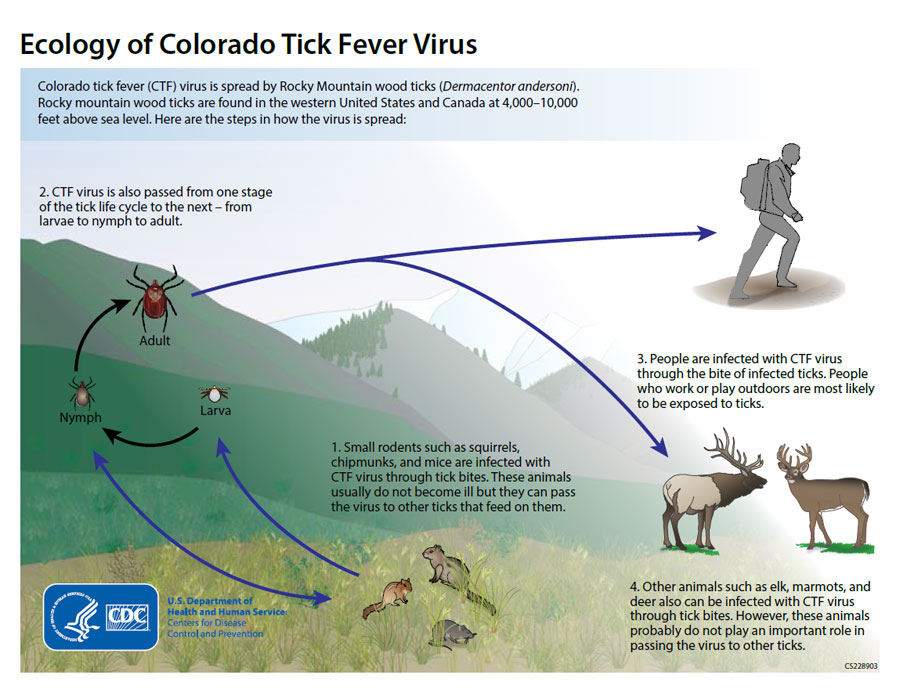
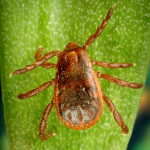
BROWN DOG TICK
Rhipicephalus sanguineus
Brown dog ticks can carry and spread pathogens that are responsible for diseases in both humans and animals. Brown dog ticks are primary vectors for Rickettsia rickettsii (pathogen) transmission in the southwestern United States and along the U.S.-Mexico border.
- Rickettsia rickettsii (pathogen) – Rocky Mountain spotted fever (disease)
The brown dog tick is unique in that it can complete its entire life cycle indoors. In contrast to the other hard ticks, the risk of coming into contact with the brown dog tick is not necessarily from hiking or other outside activities.
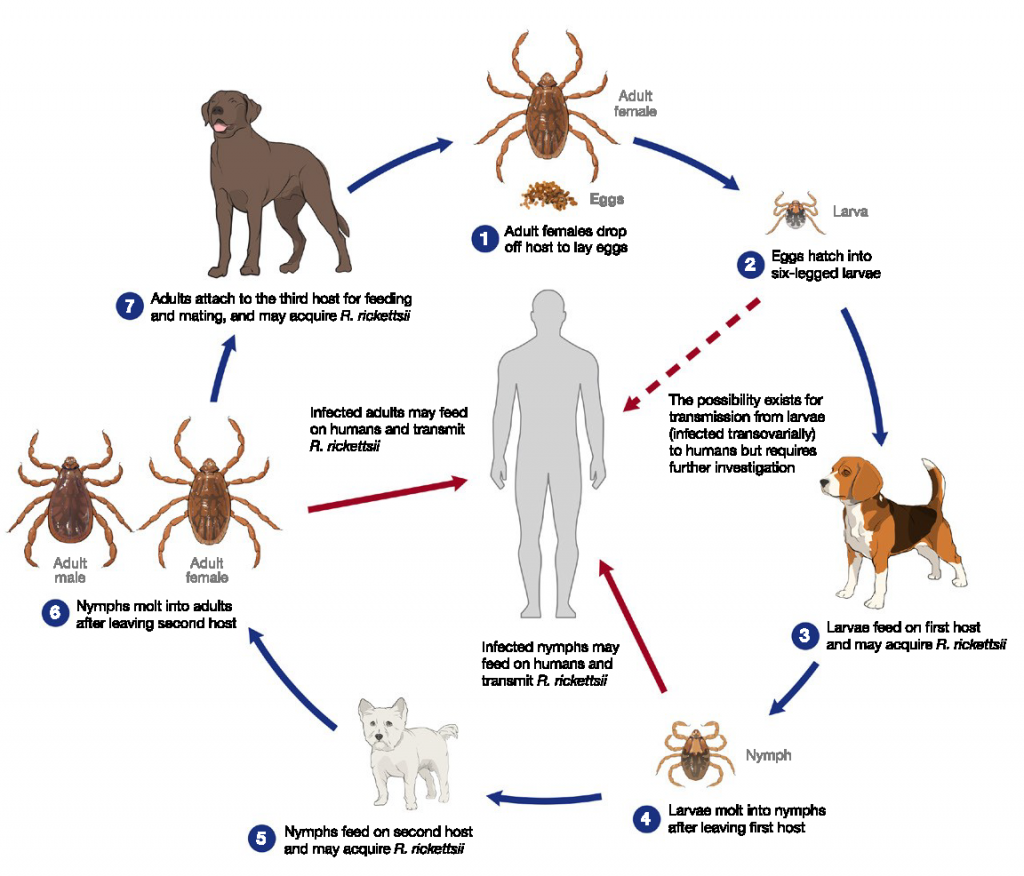
View full CDC fact sheet.
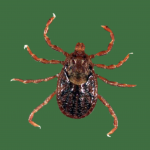
PACIFIC COAST TICK
Dermacentor occidentalis
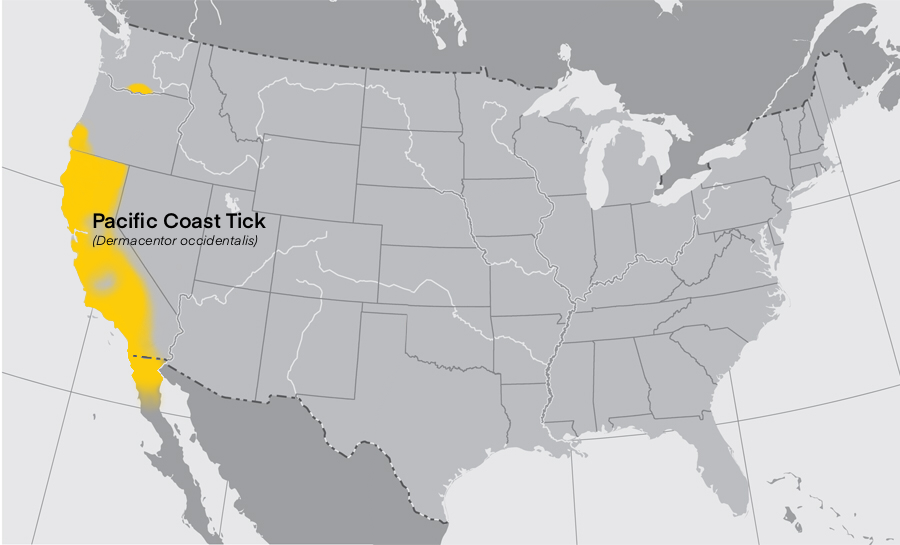 Pacific Coast ticks can be found predominantly in shrublands, chaparral, and along trails from Oregon to northern Baja California and Mexico.
Pacific Coast ticks can be found predominantly in shrublands, chaparral, and along trails from Oregon to northern Baja California and Mexico.
Visit Tick Encounter for more information.
Pacific coast ticks can carry and spread pathogens that are responsible for diseases in both humans and animals.
- Rickettsia rickettsii (pathogen) – Rocky Mountain spotted fever (disease)
- Francisella tularensis (pathogen) – Tularemia (disease)
- Rickettsia philipii or Rickettsia species 364D (pathogen) – Pacific Coast tick fever (disease)
- Colorado tick fever (CTF) virus – Colorado tick fever (disease)
TICK RESOURCES
Learn about the tick species that pose health risks for both humans and animals in the region and view public health information on ticks.
GOT TICKS? CONTACT BiTeRS!
The Border Tick and Rickettsia Surveillance (BiTeRS) program of PacVec offers services to enhance surveillance for ticks and tick-borne pathogens of human health concern in California and Arizona.
The Pacific Southwest Regional Center of Excellence in Vector-Borne Diseases is supported through Cooperative Agreement Number 1U01CK000649 between the Centers for Disease Control and Prevention (CDC) and the University of California, Davis.
© 2023 – All rights reserved
